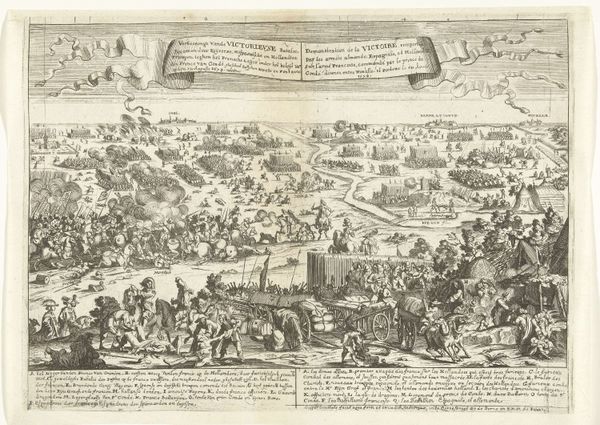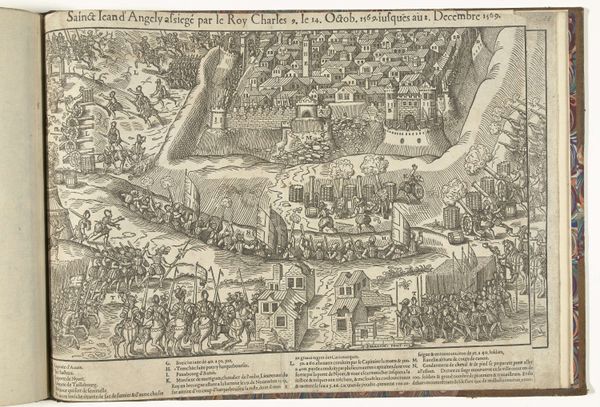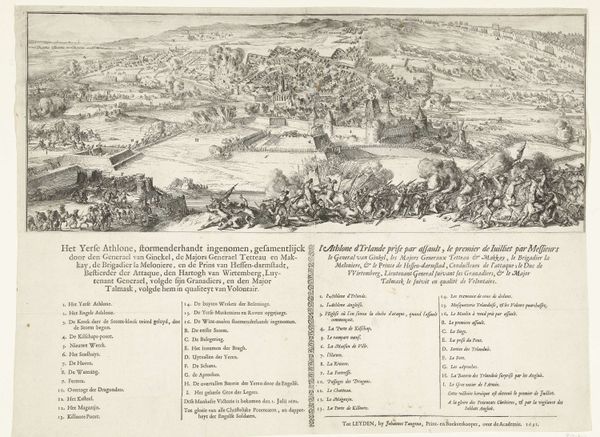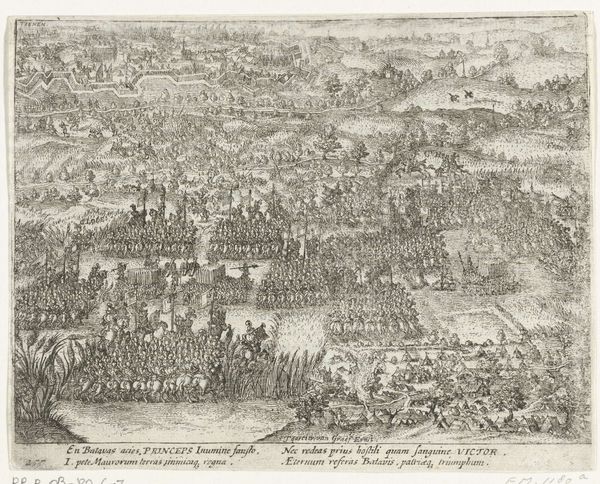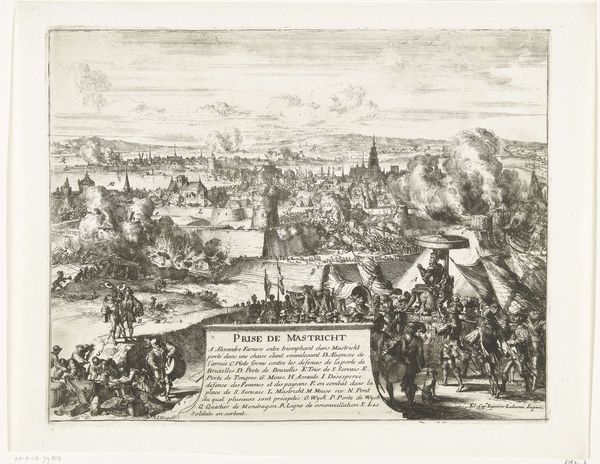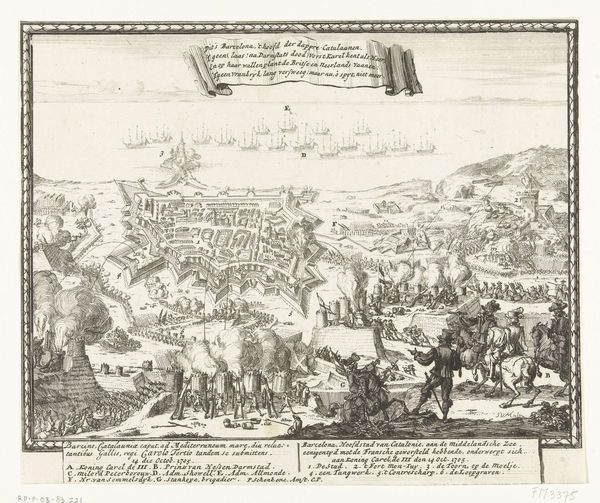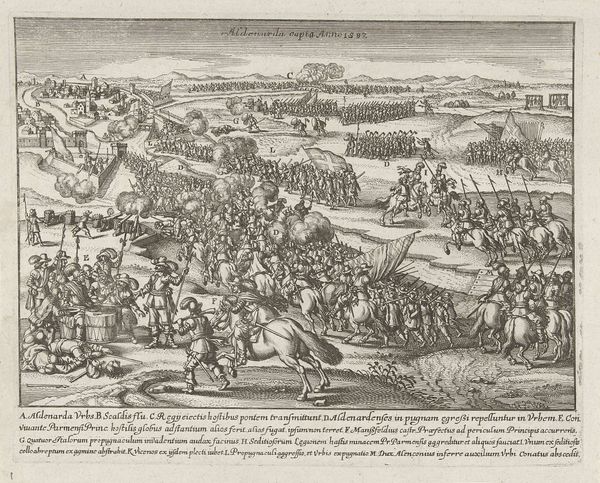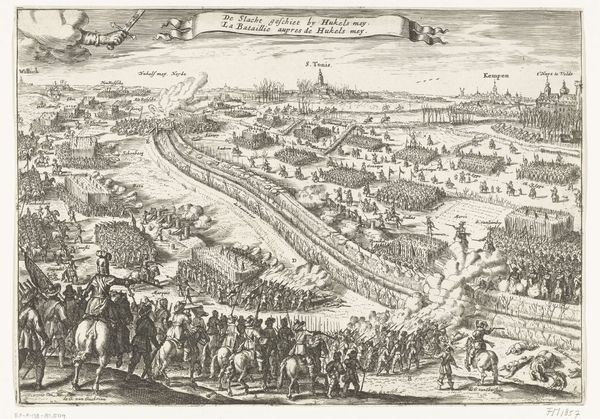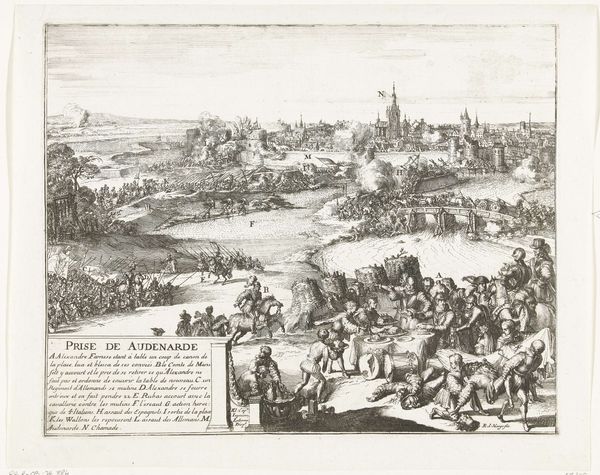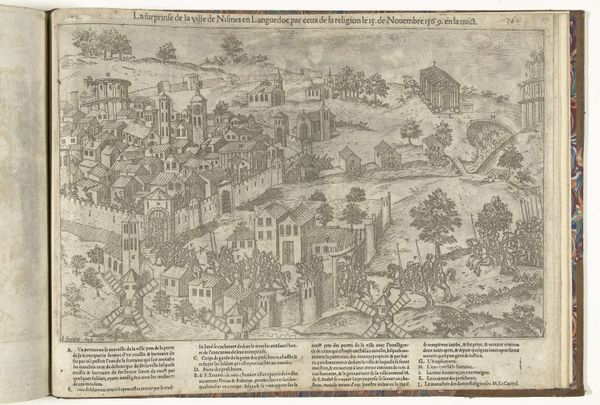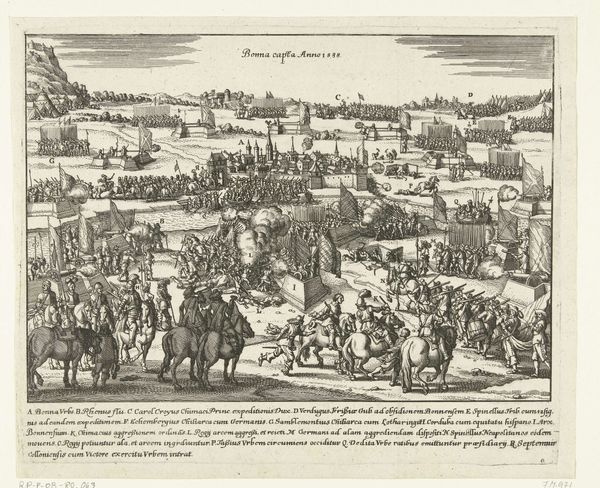
Belgrad taken by storm by Maximilian Emanuel, elector of Bavaria, September 6th 1688 1688
0:00
0:00
romeyndehooghe
Rijksmuseum
print, engraving
#
narrative-art
#
baroque
#
dutch-golden-age
# print
#
perspective
#
line
#
cityscape
#
history-painting
#
engraving
Dimensions: height 466 mm, width 581 mm
Copyright: Rijks Museum: Open Domain
Curator: This print captures the moment Belgrad was taken by storm by Maximilian Emanuel, Elector of Bavaria, on September 6th, 1688. The Dutch artist Romeyn de Hooghe created it. The print shows a detailed panoramic view of the battle. What do you think when you look at this image? Editor: It’s chaotic, isn’t it? An overwhelming scene of violence and conquest. The details, though, are fascinating – like looking at a disturbed ant colony where the ‘ants’ are fighting. The scale of the battle seems immense, and rendered meticulously through engraving. I feel lost and quite affected, in a way overwhelmed, when I see such graphic representations of warfare. Curator: Well, it reflects a significant moment in European history, part of the Great Turkish War. What strikes me is how the print functions as propaganda. De Hooghe, who also served William of Orange, visually frames the Holy Roman Empire's victory over the Ottoman Empire as a heroic triumph. Editor: I can definitely see that framing. There's a distinct lack of focus on the human cost, on the devastation left on civilian lives and structures. How can this sort of work influence public perception on this specific conflict and wars in general? Curator: Prints like these served a crucial role in shaping public opinion and solidifying political power, normalizing violence and promoting nationalistic fervor. Mass media shaped these events and solidified public perception. The accuracy, or lack thereof, had real consequences. Editor: Yes. The details also romanticize the ‘bravery’ of soldiers while often omitting the socio-economic factors that push marginalized groups to participate in the war and serve such empires. Where are the people from those subjugated communities here represented, who bear the real weight of this ‘victory’? Curator: Exactly. Consider also that this isn't an objective record but a strategic communication tool, obscuring certain truths and emphasizing others. Editor: So true, by understanding this image and others of this kind through such socio-political considerations, we can explore this moment in history with necessary nuanced views and hopefully develop informed opinions of the current events that occur around us. Curator: I concur, this allows us to engage with the art and its historical context more thoughtfully. Editor: Yes, that intersection between art and its contextual significance reveals critical perspectives about history.
Comments
No comments
Be the first to comment and join the conversation on the ultimate creative platform.
